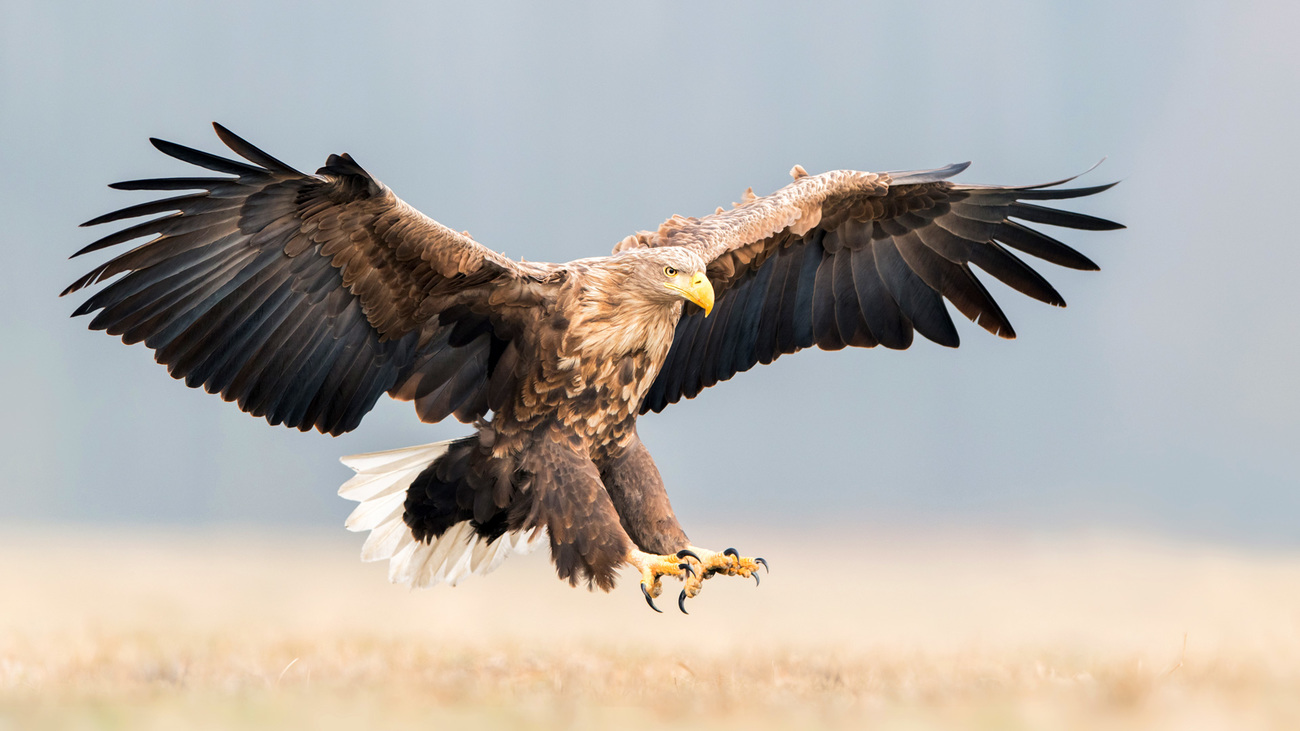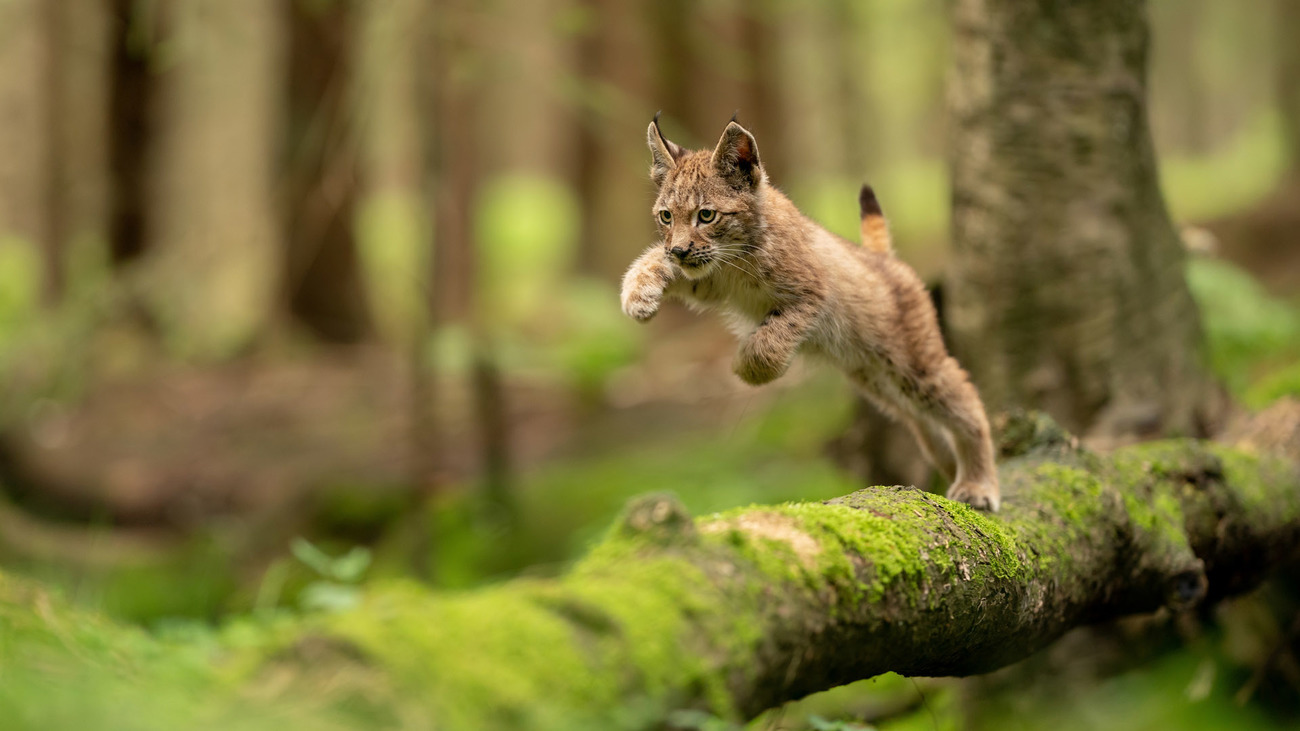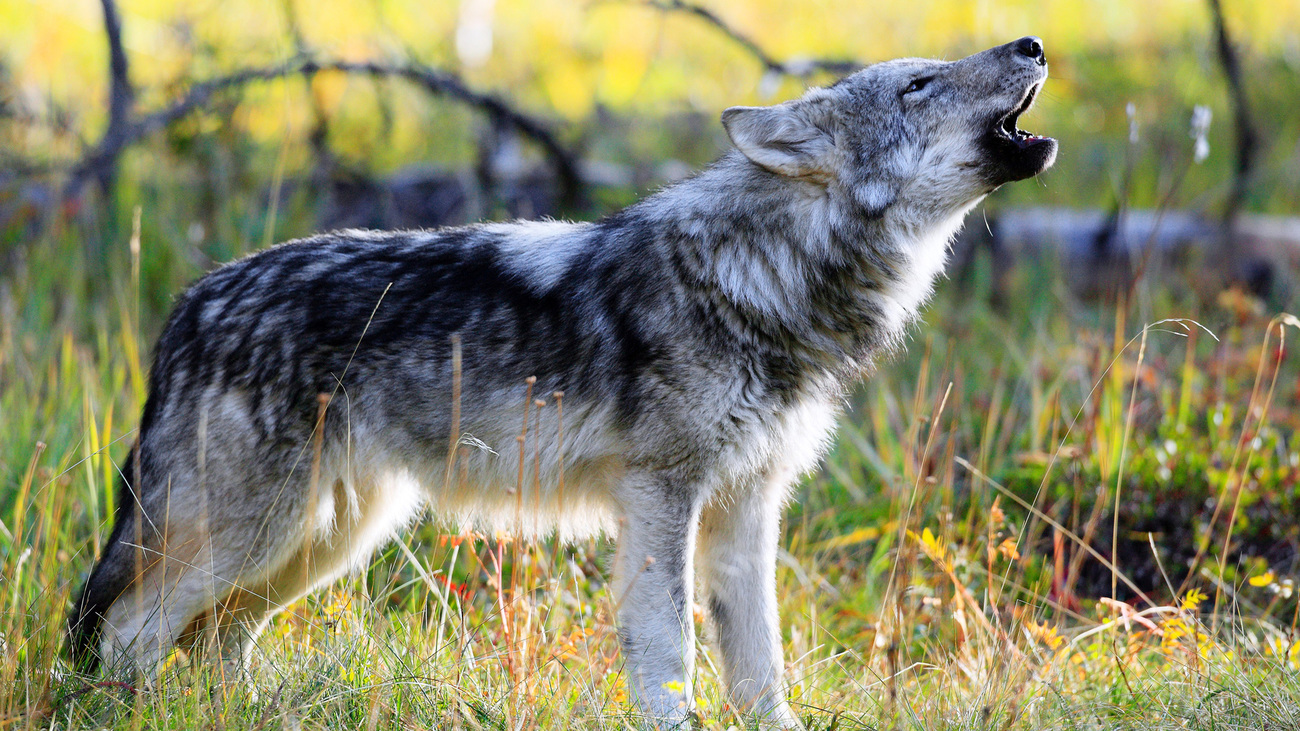12 of the most fascinating animals in Europe
12 of the most fascinating animals in Europe
From the red squirrel to the grey wolf, Europe is full of vast biodiversity across its plains, mountains, forests, and seas. Sadly, many animals in Europe are struggling to survive due to habitat loss and human-wildlife conflict. Learn more about the unique and interesting species of Europe, selected by IFAW’s staff in our Europe offices, and how we can work to protect them.
1. Eurasian red squirrel (Sciurus vulgaris)
Chosen by: Frances Goodrum, Head of Campaigns & Programmes – UK
Why: Red squirrels are common in Europe, but numbers in some countries (including the UK) have hugely decreased. They have a red-brown coat with a well-known bushy tail, smaller in size than the common grey squirrel. I love going on holiday to Scotland, one of the areas where their numbers are now stabilising thanks to conservation projects. The RSPB reserve near Loch Leven is a great spot to see a few in beautiful, tree-steeped areas.

The Eurasian red squirrel, also known simply as the red squirrel, is a bright red to duller brown rodent with a white underbelly. It has tall, pointed ears with long tufts of red fur. It’s found in forests and woodlands across the continent. Their red colouring provides camouflage against the bark of pine trees. They are classed as least concern, but in the UK and Italy, the introduced grey squirrel species can outcompete the smaller red squirrel for habitat and resources, which poses a threat to their survival in certain areas.
2. Eurasian blackbird (Turdus merula)
Chosen by: Sabine Zwiers, Senior Campaigner – Netherlands
Why: Although not the most beautiful in colours, the Eurasian blackbird is considered the most beautiful singing bird in the Netherlands. It announces spring and is the first bird that wakes you up early in the morning. Originally a forest bird, the Eurasian blackbird is now found in many gardens.
Also known as the common blackbird, the Eurasian blackbird lives across most of Europe, inhabiting a range of forest, grassland, and urban habitats. It’s known by its black feathers and the golden yellow ring around its eyes, as well as its rich caroling song. The Eurasian blackbird is classed as least concern by the IUCN; however, its population may be declining in Britain due to agricultural intensification. It’s also sadly experiencing declines in the Netherlands and Spain’s Cantabrian Mountains, though its overall population trend is increasing.
3. White-tailed eagle (Haliaeetus albicilla)
Chosen by: Sabine Zwiers, Senior Campaigner – Netherlands
Why: The white-tailed eagle has the longest wingspan of any eagle in the world. They’re also opportunistic hunters, often stealing prey from other birds and from otters.

Also known as the sea eagle, the white-tailed eagle is a large bird of prey with brown feathers aside from its bright white tail. It inhabits forests, grasslands, and marine habitats throughout Central, Northern, and Eastern Europe, as well as many other regions around the world. They typically live near large bodies of water, including lakes, rivers, and oceans. They are apex predators, swooping down to catch fish with their large talons, and also scavengers, feasting on carcasses.
4. European eel (Anguilla anguilla)
Chosen by: Frances Goodrum, Head of Campaigns & Programmes – UK
Why: The European glass eel is now one of the most trafficked animals in the world.
Sometimes referred to as glass eels due to their translucent bodies, European eels are critically endangered throughout their range. They complete one of the most impressive migrations of any animal, making a two-year journey from Europe to the Sargasso Sea (around Bermuda) to spawn their young. Sadly, trafficking these eels is lucrative, with illegal profits estimated to add up to around 3 billion Euros. Operation LAKE, a major intervention that prevented more than 26 tonnes of eels from being smuggled, allowed many to return to their natural habitats.
5. Mediterranean sperm whale (Physeter macrocephalus)
Chosen by: Aurore Morin, Senior Campaign Officer – France
Why: The sperm whale is the largest of the toothed whales and a very accomplished diver, as it can hold its breath for several hours to go down into the ocean’s depths (up to 2,000 metres deep!). Sperm whales sleep vertically and shut one half of their brain off while they sleep.

The population of sperm whales in the Mediterranean is unfortunately considered to be in danger of extinction by the IUCN because it is estimated today to consist of only 200 individuals. Mediterranean sperm whales are greatly threatened by ship strikes and underwater noise.
6. European beaver (Castor fiber)
Chosen by: Robert Kless, Country Director – Germany
Why: It’s a real landscape engineer, building dams that create habitats for many other species.
The European beaver or Eurasian beaver is found throughout western Europe, northern Europe, and the Baltic region. Unfortunately, this beaver was hunted to extinction in the UK, and its mainland population was reduced to just 1,200 individuals in 1900. Since then, the species has made a significant recovery, thanks to conservation efforts. Beavers modify their habitats more than most other animals, building dams which create floodplains. These wetlands provide habitats for many other types of animals.
7. Eurasian lynx (Lynx lynx)
Chosen by: Céline Sissler-Bienvenu, Disaster Response Programme Director – Europe
Why: Lynx are Europe’s most endangered carnivores and the world’s most threatened cats. Despite being keystone species in their ecosystems, these elusive animals face constant threats: poaching, degradation of their habitat, scarcity of prey as they compete with hunters, car accidents, and a new one—natural disasters such as flooding and wildfires. Only few thousand individuals remain across the continent.

The Eurasian lynx lives across northern, central, and eastern Europe, spanning to the eastern coast of the Asian continent. The Iberian lynx (Lynx pardinus) lives only in Spain and is much more endangered—there are only 156 Iberian lynx estimated to be remaining.
8. Harbour porpoise (Phocoena phocoena)
Chosen by: Noé Swynghedauw, Campaign Officer – France
Why: The harbour porpoise is one of the smallest cetacean species. It usually lives in small groups, and surfaces quickly without showing too much of its body above the water. I find them really intriguing because of their elusive character!
Combined estimates indicate that there are more than one million harbour porpoises in the world. As a result, the species is classified globally as least concern. However, there are some notable exceptions: the Baltic Sea population is considered critically endangered, and the Black Sea population is considered endangered. There is also growing concern about the population on the Iberian Peninsula. In all three cases, fisheries bycatch is the main cause of the continuing decline in small cetacean populations.
9. Elk
Chosen by: Robert Kless, Country Director – Germany
Why: Known as the ‘king of the forests’, the elk is the largest and heaviest deer in the world.

Known as the moose in North America and the elk in Europe, this species (Alces alces) is known for its broad, open-hand shaped antlers, which males shed each year (female elk do not grow antlers). Baby elk grow incredibly fast, so by the time they are only five days old, they are large and strong enough to outrun a human. Elk can grow up to 1.8 metres (6 feet) tall and weigh 360 to 730 kilograms (800 to 1,600 pounds).
Elk live in the colder environments of northern Europe and Russia, as well as Canada and the northern US. This species is not to be confused with the species Cervus canadensis, which is called the elk in North America.
10. Mediterranean tortoises
Chosen by: Céline Sissler-Bienvenu, Disaster Response Programme Director – Europe
Why: Tortoises have experienced more than 200 million years of evolution. These ectothermic animals succeeded to survive many crises so far thanks to their remarkable adaptive faculties. However, the anthropogenic climate change makes their lives harder. Although the tortoises evolved with fires In the Mediterranean basin, the new patterns of these (more frequent, more intense, faster and much challenging to fix) impact severely their populations. Being slow, with a very low escape capacity, they are highly vulnerable to disasters. In addition, given the high sympathy capital they benefit, they are victims of trafficking to be kept as pets. Unfortunately, as their behaviour and needs aren’t really known by the owners, and tortoises don’t vocalise when they suffer, many of them do see their lifespan reduced from an average of 60 to 90 years in the wild to 10 to 15 in captivity.
There are six distinct types of Mediterranean tortoise: the marginated tortoise (Testudo marginata), Hermann’s tortoise (Testudo hermanni), the Asia Minor tortoise (Testudo graeca ibera), the Egyptian tortoise (Testudo kleinmanni), the Negev tortoise (Testudo werneri), and the Greek tortoise (Testudo graeca, also known as the spur-thighed or common tortoise). The marginated tortoise is listed as least concern, Hermann’s tortoise as near threatened, the Greek tortoise as vulnerable, and all of these tortoises were impacted by the wildfires that ravaged Greece in the summer of 2023.
11. Grey wolf (Canis lupus)
Chosen by: Mia Crnojevic, Senior Campaigner – France
Why: This animal is an inspiration for animal intelligence and resilience and a glimmer of hope in terms of conservation efforts across Europe. It is all the more timely to mention this species as despite the conservation success, our generation risks repeating past mistakes with this magnificent creature as voices of intolerance and dissent once again put this species at risk.

Once the world’s most widely distributed mammal, the grey wolf is found in Europe, Asia, and North America, but two subspecies live in Europe—the Iberian wolf (Canis lupus signatus) and the Italian wolf (Canis lupus italicus). Wolves are apex predators, and without their presence in the ecosystem, prey species may experience out-of-control population growth, which harms vegetation and the environment as a whole. Sadly, in Europe, they were hunted almost to extinction. But since the 1960s, their population numbers have increased by almost 1,800%.
Misconceptions and fear about predators like the grey wolf impact how they are treated. IFAW works to promote coexistence with predators like wolves and to prevent inhumane lethal control methods from being used on them.
12. Alpine long-eared bat (Plecotus macrobullaris)
Chosen by: Staci McLennan, Director of Policy – Europe
Why: I’ve always loved bats. While horror movies gave them a bad name when I was growing up, I found them fascinating from the graceful way they fly through the night sky to their use of echolocation (by microbats) to navigate terrain and find food. At university in my wildlife biology lab, I was able to handle these gorgeous creatures and their furry bodies, delicate wing membranes, and soft ears were remarkable. They are a vital part of their ecosystems, and my son and I love to watch them in summer from our terrace.
The alpine long-eared bat, also called the mountain long-eared bat, is a medium-sized bat species found across Europe from France and Spain to the Middle East and the Caucasus. It is recognisable by its remarkably long ears and its white underparts. Interestingly, this bat is found high in the Alps and Pyrenees mountain ranges, but also at sea level in other areas. They also don’t seem to care much about the temperature, found in both hot and cold climates. What the alpine long-eared bat does need is rocky crevices, ledges, and crushed stones, in which they make their homes.
Related content
Every problem has a solution, every solution needs support.
The problems we face are urgent, complicated and resistant to change. Real solutions demand creativity, hard work and involvement from people like you.